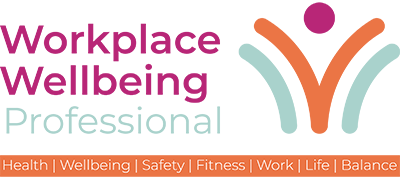As the global workplace navigates constant and rapid shifts, businesses are under pressure to prioritise mental health, particularly through periods of change management.
Employee wellbeing is spiralling – in the UK, 16.4 million working days were lost in 2023/24 due to work-related stress, depression, or anxiety, surpassing absences for any other health issue. On average, each affected individual took 21.1 days off.
Wellbeing is no longer a tickbox ESG exercise – it is business critical. Now, companies must move beyond surface-level gestures and embed mental wellbeing into the fabric of everyday work. Only by taking meaningful, practical action can they foster resilient teams and maintain a productive, engaged workforce through waves of change.
The Factors Shaping Workplace Wellbeing
Today’s workforce has become all too familiar with change – be it organisational structures, strategic direction, or productivity adjustments. In the past year alone, 58% of UK employees have seen their roles change. The same number have had to adapt to new tools, and over half (55%) have experienced shifts in team size. With each shift comes another potential blow to wellbeing.
The most obvious influence has been the onset of generative AI, and its impact on skill development, career paths, and day-to-day activities. A recent study found that AI can both increase and impede wellbeing. On the one hand, it can induce “technostress”, which leads to exhaustion and job dissatisfaction; but on the other hand, AI’s efficacy gains decrease workloads, which enhances wellbeing.
As employees grapple with what the technology means for their personal and professional futures, they’re looking to businesses for support – not just in the form of new training or internal mobility opportunities, but for emotional understanding and human connection.
Similar sentiment applies to other factors, such as the precarious economic landscape. Times of uncertainty can foster anxiety and fear in employees, causing productivity and efficiency to nosedive and a negative culture to fester. In order for businesses to effectively support their people, they need to go beyond just talking about mental health, and prioritise building it into day-to-day operations.
Using Mood Mapping as a Starting Point
Shifting from talking about wellbeing to taking action is not a heavy lift. Businesses that take small, practical, and consistent steps will be far better positioned to support their people through change, and will be rewarded with a retained, uplifted, and productive workforce.
The smallest – but perhaps the most impactful – step, is mood mapping. This is a simple structure of plotting feelings against energy levels to identify triggers and improve wellbeing. When employees are busy it can feel like they’re running on autopilot, but mood mapping allows for a moment of pause, and a self-check on feelings and energy levels.
In practice, it can be as simple as a weekly pulse check, a manager asking the right questions, or an employee feeling comfortable enough to speak up about how they’re feeling. For the latter, executives can lead by example and share when they’re having an off day, to help normalise the idea that fluctuations in emotions are a normal part of work.
Mood mapping can also be implemented in a group setting. Managers can build space into team meetings or updates to reflect on how work felt, as well as how it went. Similarly, they can add a “mood” column into project management platforms to track how their team is feeling as they progress through their tasks. These approaches allow teams to stay emotionally connected, whilst also building wellbeing practices into their day-to-day.
Expanding Wellbeing Initiatives With Impact
Mood mapping is effective on its own, but it can also be a springboard for similar initiatives, like impact assessments. When companies plan new projects, policies, or changes, factoring in potential impact on workforce mental health, and involving employees in decision-making processes will ensure their perspectives are considered. Like mood mapping, implementation can be as simple as raising the question of “what impact could this have on employees’ wellbeing?”. Once used regularly, it will become a norm in all decision making processes.
Another employee-driven approach is feedback loops. Clear data on how people feel about their daily activities and company culture can guide best practices This doesn’t have to be cumbersome; a short quarterly survey with multiple choice questions and a comment box can suffice. Employees can also do a quick daily check-in when logging into their computer.
That being said, positive change will be limited if employees don’t have time to actually pause, reflect, or give feedback. As such, businesses should look at carving out dedicated, protected time for wellbeing activities at the end of the week. This relieves employees from finding time in their schedules and empowers them to engage in activities like learning modules or coffee catch-ups with colleagues, tailored to their needs.
All of these steps are simple and actionable, but effective – and when used in tandem, they can be the difference between a struggling or flourishing workforce. As employees’ needs evolve and external pressures intensify, embedding mental wellbeing into daily operations is now fundamental to organisational success.
By moving beyond surface-level initiatives and implementing practical, people-centric strategies, companies won’t just foster a culture of resilience, trust, and sustained productivity. They will also safeguard their teams’ mental health, and unlock greater long-term engagement, loyalty, and performance.

Cat Paterson is Regional People Director for EMEA at monday.com. She has nearly two decades of experience at companies including Elastic, Bloom & Wild, and ServiceNow.


